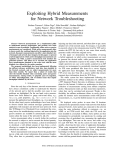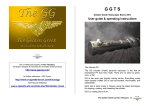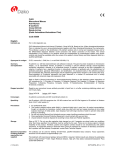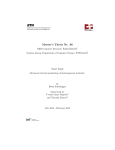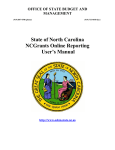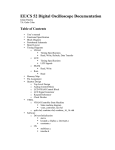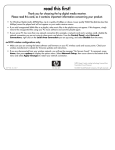Download Enabling Wireless LAN Troubleshooting
Transcript
Enabling Wireless LAN Troubleshooting Ilias Syrigos, Stratos Keranidis, Thanasis Korakis and Constantine Dovrolis Outline Introduction – Motivation IEEE 802.11 Pathologies Detection Methodology Framework Evaluation Conclusion and Future Work Introduction - Motivation Poor performance in home WLANs An everyday phenomenon Various causes often “unknown” to home administrators Troubleshooting hard even to the experts Introduction - Motivation Two approaches for diagnosing WLAN pathologies: Application layer frameworks running over commercial WLAN devices Lack of accuracy – Better applicability Driver modifications or even custom hardware for diagnosing in PHY/MAC Better accuracy – Lack of applicability Introduction - Motivation Our proposal : Bridge the gap Take advantage of default driver-level information Define the metrics able to characterize each considered pathology Rate control algorithm statistics exported to user-level for debugging Extensive experimentation in controlled environments Incorporate our findings in a user-level detection framework Evaluate its performance by quantifying the detection accuracy Outline Introduction – Motivation IEEE 802.11 Pathologies Detection Methodology Framework Evaluation Conclusion and Future Work IEEE 802.11 Pathologies The pathologies categorization that we followed is based on the way 802.11 protocol functions Carrier Sense (Backoff) Retransmissions policy (CW) Medium Contention Multiple 802.11 devices competing for channel access Non 802.11 devices (Microwave ovens, Wireless Cameras, etc.) operating in 2.4 GHz band Frame Loss Low-SNR conditions due to Low Signal Power or due to High Noise Symmetric and Asymmetric (Capture Effect) Hidden Terminal IEEE 802.11 Pathologies MAC-Layer Statistics Our approach is based on two key metrics evaluated across bitrates: Normalized Channel Accesses (NCA): CA/MCA CA: Channel Accesses per sec MCA: Model-Based Channel Accesses per sec Frame Delivery Ratio (FDR): ST/CA ST: Successful Transmissions per sec Outline Introduction – Motivation IEEE 802.11 Pathologies Detection Methodology Framework Evaluation Conclusion and Future Work Detection Methodology Initial throughput test for performance estimation Throughput under 80% of max -> Triggers detection mechanism Characterize evolution of key metrics across bitrates: NCA and FDR Identification of trends across bitrates (Theil-Sen Estimator) Increasing, Decreasing, No Trend and Constant Detection Methodology Contention with 802.11 devices Bitrate diversity leads to decrease in NCAs while FDR remains constant Detection Methodology Contention with non-802.11 devices Constant performance of NCA metric Increasing FDR in case of MW – Fluctuation in case of Camera due to almost zero transmission attempts Detection Methodology Low SNR (Low Signal and High Noise) Decrease in NCA caused of CW doubling Decrease in FDR in complex bitrates Detection Methodology Hidden Terminal NCA decreases due to Low SNR coexistence A small increase due to shorter duration of frames followed by a decrease in FDR (No Trend) Detection Methodology Capture Effect Similar to Hidden Terminal but heavier impact leads to no trend in both NCA and FDR Detection Methodology Summarizing Outline Introduction – Motivation IEEE 802.11 Pathologies Detection Methodology Framework Evaluation Conclusion and Future Work Framework Evaluation Contention One, two and three contending stations Varying PHY bitrates Varying traffic loads Detection accuracy of 100% in cases of performance degradation Framework Evaluation Frame Loss Evaluation Link 20 different locations 4 different levels of transmission power Resulting in 80 different scenarios Interfering Link Fixed location Varying PHY rate Varying traffic loads Framework Evaluation Low SNR Evaluation when Interfering Link is off 100% accuracy until SNR is not considered Low Framework Evaluation Hidden Terminal 4 locations exposed to Hidden Terminal Detection Accuracy > 85% for varying Airtime Utilization of Hidden Link Framework Evaluation Capture Effect 9 locations exposed to Capture Effect Low Airtime Utilization leads to similar impact as of Hidden Terminal – Failure in detection Outline Introduction – Motivation IEEE 802.11 Pathologies Detection Methodology Framework Evaluation Conclusion and Future Work Conclusion and Future Work Based on MAC-layer statistics exposed to user-level Defined the key metrics able to characterize common 802.11 pathologies Developed our application-level framework for identifying trends of metrics in presence of a pathology Achieved high accuracy of detection Conclusion and Future Work Extension of our framework for detection in presence of multiple pathologies Large-scale evaluation in real-world environments Passive detection for reducing overhead Thank you!



























